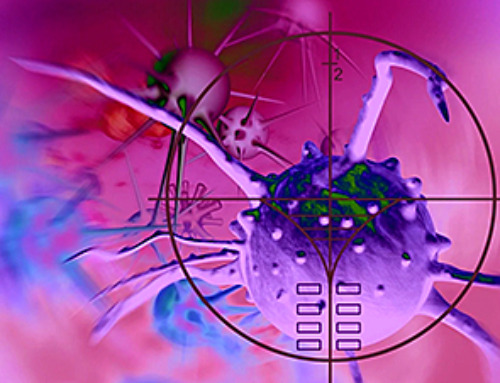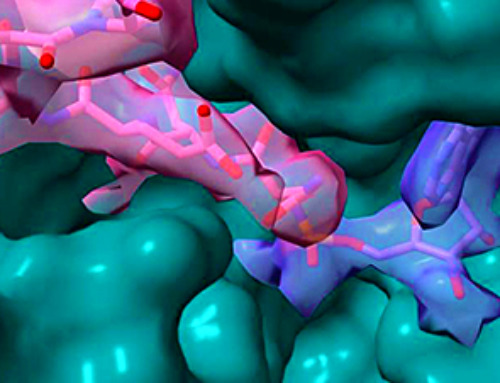| Researchers from the University of Sydney Nano Institute and School of Chemistry have revealed that tiny gas bubbles – nanobubbles just 100 billionths of a metre high – form on surfaces in unexpected situations, providing a new way to reduce drag in small-scale devices. | |
| Liquid drag within microdevices can lead to internal fouling (accumulation of unwanted biological materials) or damage biological samples such as cells, due to high pressure. So, the discovery could pave the way to the development of better medical diagnostic tools, such as lab-on-a-chip devices that undertake DNA analysis or are used for biomedical detection of disease pathogens. | |
| The team, led by Professor Chiara Neto, developed nanoengineered wrinkled coatings that reduce drag by up to 38 percent compared with nominally ‘smooth’ solid surfaces. The slippery coatings, once infused with a lubricant, are also highly resistant to biofouling. | |
| Using atomic-force microscopy – a very high-resolution scanning microscope – the team discovered that the fluids passing through micro-structured channels with these surfaces were able to slip through with lower friction due to the spontaneous formation of nanobubbles, a phenomenon never before described. | |
| The results are published in Nature Communications (“Nanobubbles explain the large slip observed on lubricant-infused surfaces”). | |
Potential medical application |
|
| Many medical diagnostic tools rely on the small-scale analysis of tiny amounts of biological and other materials in liquid form. These ‘microfluidic devices’ use microchannels and microreactors in which reactions usually done on a large scale in a chemistry or pathology lab are conducted at a miniaturised scale. | |
| Analysing much smaller volumes of material enables faster and more efficient diagnostics. However, the problem with microfluidic devices is that the fluid flow is dramatically slowed down by the friction of the liquid with the solid walls of the channels, creating a large hydrodynamic drag. To overcome this, the devices apply high pressures to drive the flow. | |
| In turn, the high pressure inside these devices is not only inefficient but can also damage delicate samples in the device, such as cells and other soft materials. Further, the solid walls easily become fouled by biological molecules or bacteria, leading to fast degradation through biofouling. | |
| A solution to both these problems is by using surfaces in which nanoscale pores trap small amounts of a lubricant, forming a slippery liquid interface, which reduces hydrodynamic drag and prevents surface biofouling. | |
| In effect, liquid-infused surfaces replace the solid wall with a liquid wall, allowing the flow of a second liquid with lower friction, requiring lower pressure. However, the mechanism by which these liquid-infused surfaces work has not been understood, as the reduction of friction that these surfaces offer has been reported to be 50 times larger than would be expected based on theory. | |
Nanobubbles to the rescue? |
|
| Professor Neto and her team have described how they formed liquid-infused walls on their microfluidic devices, by developing nanoengineered wrinkled coatings that reduce drag by up to 38 percent compared to solid walls. The team includes: PhD student Chris Vega-Sánchez, whose work over the past three years focused on microfluidics; Dr Sam Peppou-Chapman, an expert in liquid-infused surfaces; and Dr Liwen Zhu, an expert in atomic force microscopy, which gives scientists the ability to see down to a billionth of a metre. | |
| Conducting microfluidic measurements, the team revealed that the new slippery surfaces reduced drag relative to solid surfaces to a degree that would be expected only if the surface was infused with air rather than a viscous lubricant. Not satisfied with the successful drag reduction, the team worked to demonstrate the mechanism by which the surfaces induced slip. | |
| They did this by scanning the surfaces underwater using atomic-force microscopy, enabling them to image the spontaneous formation of nanobubbles, only 100 nanometres high on the surface. Their presence quantitatively explains the huge slip observed in microfluidic flow. | |
| Part of the microscopy work was done using the facilities of the Australian Centre for Microscopy & Microanalysis at the University of Sydney. | |
| Professor Neto said: “We want to understand the fundamental mechanism by which these surfaces work and to push the boundaries of their application, especially for energy efficiency. Now that we know why these surfaces are slippery and drag-reducing, we can design them specifically to minimise the energy required to drive flow in confined geometries and reduce fouling.” |
News
Nano-Enhanced Hydrogel Strategies for Cartilage Repair
A recent article in Engineering describes the development of a protein-based nanocomposite hydrogel designed to deliver two therapeutic agents—dexamethasone (Dex) and kartogenin (KGN)—to support cartilage repair. The hydrogel is engineered to modulate immune responses and promote [...]
New Cancer Drug Blocks Tumors Without Debilitating Side Effects
A new drug targets RAS-PI3Kα pathways without harmful side effects. It was developed using high-performance computing and AI. A new cancer drug candidate, developed through a collaboration between Lawrence Livermore National Laboratory (LLNL), BridgeBio Oncology [...]
Scientists Are Pretty Close to Replicating the First Thing That Ever Lived
For 400 million years, a leading hypothesis claims, Earth was an “RNA World,” meaning that life must’ve first replicated from RNA before the arrival of proteins and DNA. Unfortunately, scientists have failed to find [...]
Why ‘Peniaphobia’ Is Exploding Among Young People (And Why We Should Be Concerned)
An insidious illness is taking hold among a growing proportion of young people. Little known to the general public, peniaphobia—the fear of becoming poor—is gaining ground among teens and young adults. Discover the causes [...]
Team finds flawed data in recent study relevant to coronavirus antiviral development
The COVID pandemic illustrated how urgently we need antiviral medications capable of treating coronavirus infections. To aid this effort, researchers quickly homed in on part of SARS-CoV-2's molecular structure known as the NiRAN domain—an [...]
Drug-Coated Neural Implants Reduce Immune Rejection
Summary: A new study shows that coating neural prosthetic implants with the anti-inflammatory drug dexamethasone helps reduce the body’s immune response and scar tissue formation. This strategy enhances the long-term performance and stability of electrodes [...]
Scientists discover cancer-fighting bacteria that ‘soak up’ forever chemicals in the body
A family of healthy bacteria may help 'soak up' toxic forever chemicals in the body, warding off their cancerous effects. Forever chemicals, also known as PFAS (per- and polyfluoroalkyl substances), are toxic chemicals that [...]
Johns Hopkins Researchers Uncover a New Way To Kill Cancer Cells
A new study reveals that blocking ribosomal RNA production rewires cancer cell behavior and could help treat genetically unstable tumors. Researchers at the Johns Hopkins Kimmel Cancer Center and the Department of Radiation Oncology and Molecular [...]
AI matches doctors in mapping lung tumors for radiation therapy
In radiation therapy, precision can save lives. Oncologists must carefully map the size and location of a tumor before delivering high-dose radiation to destroy cancer cells while sparing healthy tissue. But this process, called [...]
Scientists Finally “See” Key Protein That Controls Inflammation
Researchers used advanced microscopy to uncover important protein structures. For the first time, two important protein structures in the human body are being visualized, thanks in part to cutting-edge technology at the University of [...]
AI tool detects 9 types of dementia from a single brain scan
Mayo Clinic researchers have developed a new artificial intelligence (AI) tool that helps clinicians identify brain activity patterns linked to nine types of dementia, including Alzheimer's disease, using a single, widely available scan—a transformative [...]
Is plastic packaging putting more than just food on your plate?
New research reveals that common food packaging and utensils can shed microscopic plastics into our food, prompting urgent calls for stricter testing and updated regulations to protect public health. Beyond microplastics: The analysis intentionally [...]
Aging Spreads Through the Bloodstream
Summary: New research reveals that aging isn’t just a local cellular process—it can spread throughout the body via the bloodstream. A redox-sensitive protein called ReHMGB1, secreted by senescent cells, was found to trigger aging features [...]
AI and nanomedicine find rare biomarkers for prostrate cancer and atherosclerosis
Imagine a stadium packed with 75,000 fans, all wearing green and white jerseys—except one person in a solid green shirt. Finding that person would be tough. That's how hard it is for scientists to [...]
Are Pesticides Breeding the Next Pandemic? Experts Warn of Fungal Superbugs
Fungicides used in agriculture have been linked to an increase in resistance to antifungal drugs in both humans and animals. Fungal infections are on the rise, and two UC Davis infectious disease experts, Dr. George Thompson [...]
Scientists Crack the 500-Million-Year-Old Code That Controls Your Immune System
A collaborative team from Penn Medicine and Penn Engineering has uncovered the mathematical principles behind a 500-million-year-old protein network that determines whether foreign materials are recognized as friend or foe. How does your body [...]





















